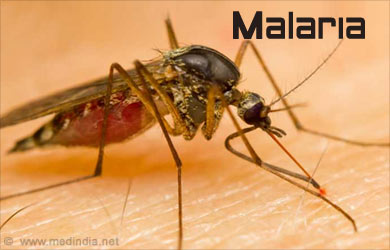Editor’s summary
Polycystic ovary syndrome is a common endocrine condition in women of reproductive age. Its manifestations include androgen excess and other hormonal changes, menstrual cycle alterations, infertility, and metabolic abnormalities. Artemisinins are plant-derived compounds that are best known for their antimalarial properties but have also been shown to have some beneficial metabolic effects. Liu et al. demonstrated that artemisinins can also relieve the endocrine manifestations of polycystic ovarian syndrome in multiple rodent models and in human patients, suggesting a potential approach to treating multiple facets of this endocrine disorder (see the Perspective by Stener-Victorin). —Yevgeniya Nusinovich
Structured Abstract
INTRODUCTION
Polycystic ovarian syndrome (PCOS), a prevalent reproductive endocrine disorder affecting 10 to 13% of women in their reproductive age, is characterized by hyperandrogenemia, ovulatory dysfunction, polycystic ovarian morphology, and often by associated metabolic disorders. Androgen excess is a key factor driving the phenotypic features of PCOS. Despite the high prevalence of PCOS, pharmacologic interventions for such a complicated syndrome encounter substantial challenges. The treatment options currently available for PCOS are limited and mainly tailored to management of specific symptoms. Consequently, there is a compelling and urgent need for the development of innovative therapeutic strategies.
RATIONALE
Artemisinin, derived from Artemisia plants, is widely recognized for its efficacy against malaria. We have previously demonstrated that artemisinin and its derivatives possess the capability to enhance energy expenditure and insulin sensitivity through the activation of thermogenic adipocytes, thereby protecting against diet-induced obesity and metabolic disorders. In this study, we explored the therapeutic potential of artemisinins in rodent PCOS-like models and human patients with PCOS by evaluating the effect of artemisinin derivatives on testosterone level, estrous cycle, and polycystic ovarian morphology. Using in vitro and in vivo approaches, we investigated the impact of artemisinins on ovarian testosterone synthesis. The direct target of artemisinins was identified to elucidate the mechanism governing the regulation of testosterone synthesis by artemisinins.
RESULTS
We found that artemisinin analog artemether exhibited considerable improvements in hyperandrogenemia, irregular estrous cycles, polycystic ovarian morphology, and low fertility in the PCOS-like rodent models. Artemisinins inhibited hyperandrogenemia by repressing ovarian testosterone synthesis. Relative quantitative proteomics analysis revealed cytochrome P450 family 11 subfamily A member 1 (CYP11A1), the enzyme catalyzing the initial step of androgen synthesis, as the most notably decreased protein affected by artemisinins. Further investigation showed that artemisinins induced the degradation of CYP11A1, leading to the inhibition of ovarian androgen synthesis. This inhibitory effect was diminished in the absence of CYP11A1. Mechanistically, artemisinins directly targeted the lon peptidase 1 (LONP1), enhancing the interaction between LONP1 and CYP11A1 and promoting the LONP1-catalyzed degradation of CYP11A1. Conversely, androgenic inducer disrupted the binding between LONP1 and CYP11A1; additionally, LONP1 was down-regulated in PCOS, resulting in elevated CYP11A1 levels and increased androgen synthesis. Protein-docking simulations and subsequent functional experiments suggested that the inhibitory effect of artemisinins on CYP11A1 level largely depended on their direct binding to the proteolytic domain of LONP1. Consistent with the function of artemisinins, LONP1 overexpression strongly suppressed androgen production in the ovary. Lastly, a pilot clinical trial was conducted to confirm the therapeutic effects of artemisinins in patients with PCOS. We found that dihydroartemisinin treatment effectively ameliorated hyperandrogenemia, reduced anti-Müllerian hormone levels, improved polycystic ovarian morphology, and contributed to the normalization of menstruation in patients with PCOS.
CONCLUSION
Our data demonstrated the efficacy of artemisinins in alleviating symptoms associated with PCOS in both rodent models and human patients. Artemisinins directly bind to LONP1, initiating the interaction between LONP1 and CYP11A1, which in turn promotes the degradation of CYP11A1, subsequently inhibiting ovarian androgen synthesis and curbing PCOS. Contrarily, androgenic inducer disrupts LONP1-CYP11A1 interaction and aggravates PCOS. Overall, our findings highlight the promising potential of artemisinins as effective drugs for the comprehensive treatment of PCOS. This discovery illuminates a previously unknown interaction between LONP1 and CYP11A1 that is enhanced by artemisinins to govern androgen synthesis, opening avenues for PCOS intervention by targeting LONP1-CYP11A1 interaction.
Abstract
Polycystic ovary syndrome (PCOS), a prevalent reproductive disorder in women of reproductive age, features androgen excess, ovulatory dysfunction, and polycystic ovaries. Despite its high prevalence, specific pharmacologic intervention for PCOS is challenging. In this study, we identified artemisinins as anti-PCOS agents. Our finding demonstrated the efficacy of artemisinin derivatives in alleviating PCOS symptoms in both rodent models and human patients, curbing hyperandrogenemia through suppression of ovarian androgen synthesis. Artemisinins promoted cytochrome P450 family 11 subfamily A member 1 (CYP11A1) protein degradation to block androgen overproduction. Mechanistically, artemisinins directly targeted lon peptidase 1 (LONP1), enhanced LONP1-CYP11A1 interaction, and facilitated LONP1-catalyzed CYP11A1 degradation. Overexpression of LONP1 replicated the androgen-lowering effect of artemisinins. Our data suggest that artemisinin application is a promising approach for treating PCOS and highlight the crucial role of the LONP1-CYP11A1 interaction in controlling hyperandrogenism and PCOS occurrence.







